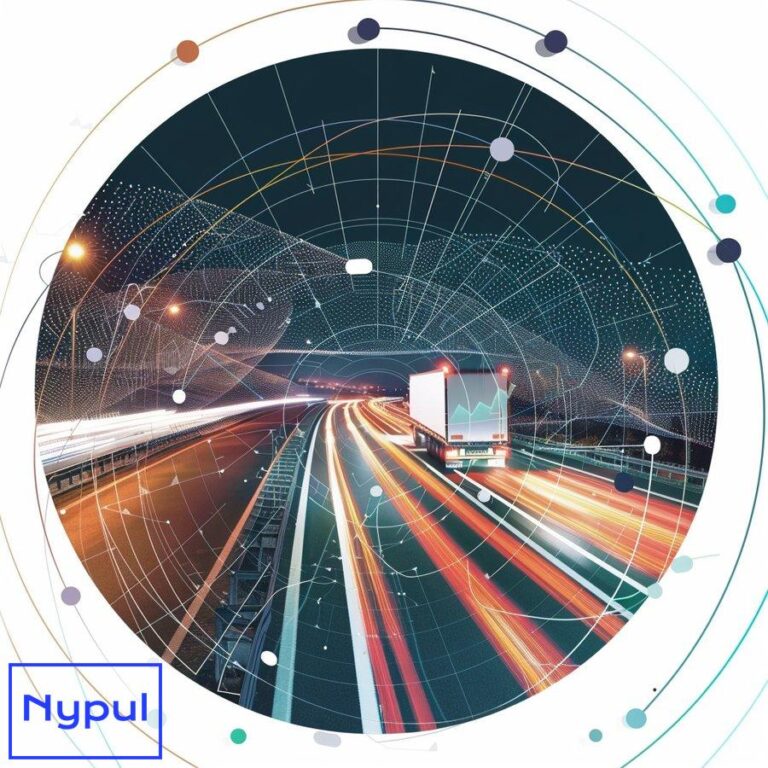What Is the Relationship Between Driver and Dispatcher
What defines the driver-dispatcher relationship in trucking?
The driver-dispatcher relationship forms the backbone of the trucking industry, influencing efficiency, safety, and overall operational success. This relationship is characterized by several key elements:
Communication
Effective communication is paramount. Dispatchers relay vital information regarding routes, schedules, and cargo details to drivers. Conversely, drivers provide feedback on road conditions, delays, and any issues encountered during transit. This two-way communication fosters a collaborative environment where both parties can address challenges promptly.
Trust
Trust is a foundational element that allows drivers and dispatchers to rely on each other’s expertise. Drivers must trust that dispatchers will provide accurate information and support during their trips. Dispatchers, in turn, must trust that drivers will adhere to safety protocols and communicate any issues they face.
Collaboration
The relationship thrives on collaboration. Dispatchers work closely with drivers to optimize routes and schedules while considering drivers’ preferences and feedback. This cooperative approach enhances job satisfaction for drivers and improves operational efficiency for companies.
Respect
Mutual respect between drivers and dispatchers is essential for maintaining a positive working environment. Recognizing each other’s roles and challenges fosters a sense of camaraderie that can lead to better performance.
The driver-dispatcher relationship is not merely transactional; it is a partnership that requires ongoing effort from both parties to ensure success in the trucking industry.
How do drivers and dispatchers communicate effectively?
Effective communication between drivers and dispatchers is crucial for maintaining smooth operations in the trucking industry. Several strategies can enhance this communication:
Use of Technology
Modern technology plays a significant role in facilitating communication. Tools such as mobile apps, GPS tracking systems, and electronic logging devices (ELDs) allow real-time updates on location, traffic conditions, and delivery schedules.
Regular Check-ins
Establishing regular check-ins helps maintain open lines of communication. Dispatchers can schedule brief calls or messages to ensure drivers are on track and address any concerns they may have.
Clear Instructions
Providing clear and concise instructions minimizes misunderstandings. Dispatchers should ensure that all relevant information regarding routes, cargo handling, and delivery expectations is communicated effectively.
Feedback Mechanisms
Creating feedback mechanisms encourages drivers to voice their concerns or suggestions. Dispatchers should actively seek input from drivers about their experiences on the road, which can lead to improvements in processes.
| Communication Strategy | Description |
|---|---|
| Use of Technology | Implementing mobile apps and GPS for real-time updates |
| Regular Check-ins | Scheduling routine calls or messages for updates |
| Clear Instructions | Ensuring all information is communicated clearly |
| Feedback Mechanisms | Encouraging driver input for continuous improvement |
By adopting these strategies, trucking companies can foster effective communication between drivers and dispatchers, leading to enhanced operational efficiency.
Why is trust crucial between drivers and dispatchers?
Trust serves as the cornerstone of the driver-dispatcher relationship. It influences every interaction and decision made within this dynamic partnership. The importance of trust can be highlighted through several key aspects:
Safety Compliance
Drivers must trust that dispatchers will provide accurate information regarding safety regulations and compliance requirements. This trust ensures that drivers adhere to legal standards while on the road.
Problem Resolution
When issues arise during transit—such as delays or mechanical problems—drivers need to feel confident that dispatchers will respond promptly with solutions. A trustworthy dispatcher can alleviate stress for drivers facing unexpected challenges.
Job Satisfaction
A trusting relationship leads to higher job satisfaction for both parties. Drivers who feel supported by their dispatchers are more likely to remain motivated and engaged in their work.
Operational Efficiency
Trust enhances operational efficiency by allowing for quicker decision-making. When drivers trust their dispatchers’ judgment, they are more likely to act on instructions without hesitation, leading to smoother operations.
In summary, trust between drivers and dispatchers is essential for ensuring safety, addressing problems effectively, enhancing job satisfaction, and improving overall operational efficiency.
What are the main challenges in the driver-dispatcher dynamic?
Despite its importance, the driver-dispatcher relationship faces several challenges that can hinder effectiveness:
Communication Barriers
Miscommunication can lead to significant issues such as missed deliveries or unsafe driving conditions. Language barriers or technological limitations may exacerbate these problems.
High Turnover Rates
The trucking industry often experiences high turnover rates among both drivers and dispatchers. This instability can disrupt established relationships, making it difficult to build trust over time.
Workload Imbalance
Dispatchers may face overwhelming workloads during peak times, leading to rushed communications with drivers. Conversely, drivers may feel overburdened by tight schedules without adequate support from dispatchers.
| Challenge | Description |
|---|---|
| Communication Barriers | Issues stemming from miscommunication or language differences |
| High Turnover Rates | Instability affecting relationship continuity |
| Workload Imbalance | Rushed communications due to dispatcher overload |
Addressing these challenges requires proactive strategies from both parties to foster a more resilient driver-dispatcher dynamic.
How does the driver-dispatcher relationship impact company performance?
The driver-dispatcher relationship significantly influences overall company performance in several ways:
Efficiency in Operations
A strong relationship leads to better coordination between drivers and dispatchers, resulting in optimized routes and reduced fuel costs. Effective collaboration minimizes delays and enhances delivery timelines.
Employee Retention
Companies with positive driver-dispatcher relationships tend to have higher employee retention rates. Satisfied employees are less likely to leave their positions, reducing recruitment costs associated with high turnover.
Customer Satisfaction
When deliveries are timely and reliable due to effective communication between drivers and dispatchers, customer satisfaction increases. Happy customers are more likely to return for future business.
| Performance Metric | Impact of Driver-Dispatcher Relationship |
|---|---|
| Efficiency in Operations | Better coordination leads to optimized routes |
| Employee Retention | Higher retention rates reduce recruitment costs |
| Customer Satisfaction | Timely deliveries enhance customer loyalty |
In summary, a robust driver-dispatcher relationship directly contributes to improved operational efficiency, employee retention, and customer satisfaction—all critical components of company performance.
What role does technology play in driver-dispatcher interactions?
Technology has revolutionized the way drivers and dispatchers interact within the trucking industry. Its role can be examined through various dimensions:
Real-Time Communication Tools
Mobile applications enable instant messaging between drivers and dispatchers. This immediacy allows for quick updates regarding schedules or route changes, fostering seamless communication.
Tracking Systems
GPS tracking systems provide real-time location data for both parties. Dispatchers can monitor a driver’s progress while offering timely support if delays occur due to traffic or weather conditions.
Electronic Logging Devices (ELDs)
ELDs help ensure compliance with Hours of Service (HOS) regulations by automatically recording driving hours. This technology reduces paperwork for both drivers and dispatchers while promoting safety through adherence to legal limits.
| **Technology Type | **Role in Interaction |
|---|---|
| Real-Time Communication Tools | Enable instant messaging for quick updates |
| Tracking Systems | Provide real-time location data |
| Electronic Logging Devices | Ensure compliance with HOS regulations |
By leveraging these technologies effectively, companies can enhance interactions between drivers and dispatchers while improving overall operational efficiency.
How is authority and autonomy balanced between drivers and dispatchers?
Balancing authority and autonomy between drivers and dispatchers is crucial for maintaining a healthy working environment:
Defining Roles Clearly
Clearly defining roles helps establish boundaries regarding authority. Dispatchers are responsible for planning routes and schedules while ensuring compliance with regulations; however, they must also respect the driver’s expertise regarding road conditions.
Empowering Drivers with Decision-Making Authority
Allowing drivers some degree of autonomy empowers them to make decisions based on real-time conditions they encounter on the road. For example, if a driver encounters an unexpected detour due to construction, they should have the authority to adjust their route accordingly after informing the dispatcher.
Open Dialogue about Authority Limits
Encouraging open dialogue about authority limits fosters mutual understanding between both parties. Regular discussions regarding expectations can help clarify roles while promoting collaboration rather than conflict.
In summary, balancing authority involves defining roles clearly while empowering drivers with decision-making capabilities—ultimately leading toward enhanced collaboration within the driver-dispatcher dynamic.
What training can improve driver-dispatcher relationships?
Investing in training programs tailored specifically for both drivers and dispatchers can significantly enhance their working relationships:
Communication Skills Training
Training programs focused on improving communication skills help both parties express themselves clearly while actively listening to each other’s concerns—fostering better understanding overall.
Conflict Resolution Workshops
Conflict resolution workshops equip participants with tools necessary for managing disagreements constructively—ensuring that issues do not escalate into larger problems affecting operations negatively.
| **Training Type | **Focus Area |
|---|---|
| Communication Skills Training | Enhancing clarity in expression |
| Conflict Resolution Workshops | Managing disagreements constructively |
By prioritizing these training initiatives within organizations’ professional development plans—companies create an environment conducive toward stronger driver-dispatcher relationships ultimately leading toward improved operational outcomes overall!
How can the success of the driver-dispatcher relationship be measured?
Measuring success within the driver-dispatcher relationship requires careful consideration of various metrics:
-
Driver Satisfaction Surveys
Conducting regular surveys allows companies insight into how satisfied their drivers feel regarding communication effectiveness with their respective dispatch teams—providing valuable feedback necessary for continuous improvement efforts! -
Operational Metrics
Monitoring key performance indicators (KPIs) such as delivery times or fuel efficiency provides quantitative data reflecting how well interactions between these two entities translate into tangible results! -
Retention Rates
Tracking employee retention rates serves as another indicator—higher retention signifies stronger relationships built upon trust respect collaboration!
In conclusion—measuring success involves utilizing multiple metrics including surveys KPIs retention rates—all contributing toward fostering healthier more productive working environments within trucking organizations!
This draft encompasses key aspects of the driver-dispatcher relationship while adhering closely to your outlined requirements!





